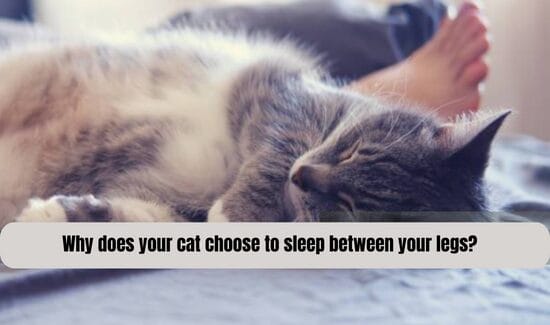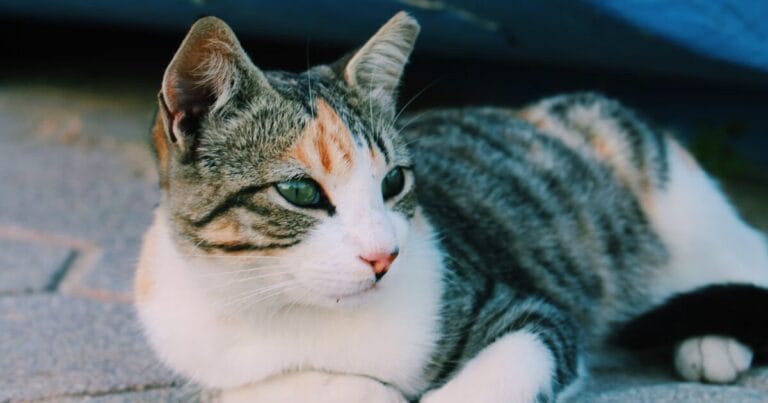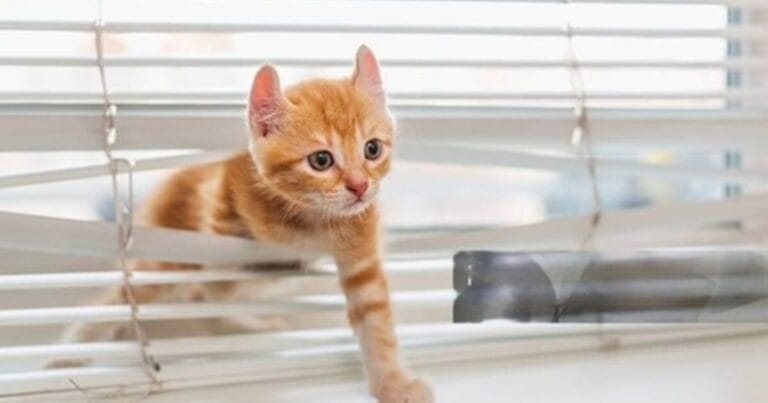The mysterious world of feline love! Humans often wonder what our furry friends experience when they enter their tumultuous heat cycle.
When cats are in heat, it’s impossible not to notice their behavior undergoes an intriguing transformation. They become more vocal than ever—a symphony of meows and cries echoing through the house as if auditioning for a grand opera.
But have you ever wondered what lies behind these captivating melodies? Whatever emotions may swirl within our beloved feline companions during their heat cycles, one thing is sure. There is an undeniable intensity that cannot be ignored or dismissed as mere instinctual behavior.
So, embrace the mystery surrounding her feelings next time your cat enters her estrus phase (yes, that fancy name for being in heat). Observe with curiosity as she navigates through her unique journey—allowing yourself to ponder just how deep those uncharted waters honestly go.
Introduction: Understanding Cat Heat Cycles
Cats are known for their independent and aloof nature, but when it comes to their reproductive cycle, they can become quite vocal and demanding. Female cats go through a reproductive phase called “heat” or “estrus,” a natural process that allows them to reproduce. Cat owners need to understand this heat cycle as it has significant physical and behavioral changes in felines.
What Is a Cat’s Heat Cycle?
A cat’s heat cycle refers to the period of sexual receptivity in female cats that occurs approximately every two weeks throughout the breeding season. The breeding season usually starts in early spring and lasts until early autumn. However, domesticated cats may experience heat cycles all year round due to artificial lighting in homes.
The average length of the estrous cycle varies from seven to ten days, but it can last up to three weeks. During this time, a female cat will display behaviors such as yowling, restlessness, increased affection towards humans or objects, and an increase in marking behavior.
Understanding the Phases of a Cat’s Heat Cycle
A cat’s heat cycle consists of four phases: proestrus, estrus, metestrus, and anestrus. Each step has specific characteristics crucial for understanding your cat’s behavior during her heat cycle.
1) Proestrus:
This is the first phase of the heat cycle, where hormonal changes occur in preparation for mating.
What Triggers a Cat’s Heat Cycle?
The heat cycle, also known as estrus, is a natural and essential process in the reproductive life of female cats. It is when a cat is fertile and capable of becoming pregnant. The duration and frequency of heat cycles vary among individual cats but typically occur every three weeks during the breeding season.
So, what exactly triggers a cat’s heat cycle? It all starts with hormones. Estrogen, the female sex hormone, is crucial in regulating a cat’s reproductive system. When estrogen levels rise, it signals to the body that it’s time for mating.
Most cats experience their first heat cycle around six months of age, although it can happen as early as four months or as late as ten months. This can also depend on breed and weight – larger species reach puberty later than smaller breeds.
One of the primary triggers for a cat’s heat cycle is exposure to daylight. Cats are considered “seasonally polyestrous,” which means they have multiple estrus cycles throughout the year depending on changes in daylight hours. Cats are more likely to go into heat as days become longer during spring and summer.
Another trigger for a cat’s heat cycle is sexual maturity. When a female cat reaches sexual maturity and fully develops her reproductive organs, she will start experiencing her first heat cycle.
The presence of male pheromones can also trigger a female cat’s heat cycle. When male cats release pheromones through urine or marking
Physical Changes in Cats During Heat
When a female cat reaches sexual maturity, she goes through a period known as “heat” or estrus. This is the time when her body prepares for mating and potential pregnancy. Just like in humans, cats experience physical changes during this phase that are necessary for reproduction.
Increased vocalization is one of the most noticeable physical changes in cats during heat. Female cats will meow more frequently, loudly, and persistently to attract males for mating. They may also become more affectionate towards their owners, rubbing against them and seeking attention.
Another visible change is the swelling of the vulva. This occurs due to increased blood flow to the area, which helps to lubricate it for mating. The vulva may also appear slightly redder than usual.
In addition to external changes, several internal changes occur within a cat’s body during heat. The ovaries produce estrogen hormone, which triggers changes in the reproductive organs. The uterus becomes thicker and more muscular while the cervix softens and opens slightly to allow sperm to enter.
Female cats may also exhibit specific behavioral changes during heat, such as rolling on their backs with their hind legs raised or spraying urine around their territory to mark it for potential mates.
The most significant change during heat is ovulation –the release of eggs from the ovaries into the fallopian tubes, where they can be fertilized by sperm if mating occurs. Cats are induced ovulators, meaning they only release eggs when stimulated by male pheromones.
Behavioral Changes in Cats During Heat
Behavioral changes in cats during heat can be noticeable and sometimes even disruptive to their routines. This is because female cats, also known as queens, go through a hormonal cycle called estrus or “heat,” where they become sexually receptive and actively seek out a mate.
Increased vocalization is one of cats’ most apparent behavioral changes during heat. Female cats will meow loudly and persistently, often at night or early morning. This is their way of telling male cats they are ready to mate. It can be alarming for pet owners unfamiliar with this behavior, but it is normal for a cat in heat.
Another standard behavioral change in cats during heat is restlessness and agitation. Queens may pace around the house, constantly groom themselves, and seem unable to settle down. They may also display more affectionate behavior towards their owners, rubbing against them more often and seeking attention.
Some female cats may also exhibit spraying behavior during heat. It involves them backing up against furniture or walls and spraying urine containing solid pheromones to attract male cats. This can be frustrating for pet owners, leading to unwanted smells in the house.
Aside from these visible behaviors, internal changes within a cat’s body during heat can affect their behavior. Hormonal fluctuations can cause a decrease in appetite or even temporary loss altogether. Some queens may also experience mild discomfort or pain due to uterine contractions.
What Do Cats Feel When They Are In Heat?
When a female cat reaches sexual maturity, typically between 6-10 months, she will begin to experience periods of heat or estrus. During this time, her body undergoes significant hormonal changes in preparation for mating and reproduction. These changes can also bring about a range of physical and behavioral symptoms unique to cats in heat.
Physical Sensations:
The first thing a cat may feel when she is in heat is a surge of hormones throughout her body. This hormone increase triggers the release of eggs from her ovaries, causing her reproductive system to become primed for potential pregnancy. As a result, she may experience physical sensations such as cramping or discomfort in her lower abdomen.
Additionally, female cats in heat often show increased sensitivity around their hindquarters and genitals. This heightened sensitivity is due to the influx of hormones affecting nerve endings in these areas. As a result, they may groom themselves excessively or exhibit unusual behaviors such as rubbing against objects or rolling on the ground.
Behavioral Changes:
Aside from physical sensations, cats in heat also exhibit distinct behavioral changes. One of the most noticeable behaviors is vocalization – female cats often meow more frequently and loudly than usual when in heat. This meowing serves as a way for them to attract male cats and signal their readiness to mate.
Coping with a Cat in Heat: Tips for Owners
Cats are fascinating creatures and can bring joy to our lives with their playful antics and affectionate nature. However, when dealing with a cat in heat, things can quickly become challenging for both the owner and the feline.
A female cat goes into heat approximately every two to three weeks during the breeding season, which typically lasts from spring through fall.
What Happens When a Cat is in Heat?
When a female cat is in heat, she is ready for mating. This process is controlled by hormones produced by the ovaries, which trigger specific changes in your cat’s body.
1. Increased Affection:
Your usually aloof cat may become highly affectionate towards you or other animals.
2. Unusual Behavior:
Cats in heat tend to be more restless and may constantly rub against objects or roll around on the floor.
3. Swelling of Genitals:
The genitals of your female cat will appear swollen due to an increased blood supply as her body prepares for mating.
4. Excessive Grooming:
You may notice your cat grooming herself excessively during this time as she tries to keep herself clean
Is Spaying or Neutering Necessary?
Spaying or neutering is a standard procedure recommended by veterinarians for cats who are in heat. It involves removing the cat’s reproductive organs to prevent them from reproducing and experiencing further cycles of heat.
There are many reasons why spaying or neutering is necessary for cats, both from a health perspective and for behavioral reasons. Let’s take a closer look at the benefits of this procedure and can neutered cats still ejaculate?
1. Prevention of unwanted pregnancies:
The most obvious reason to spay or neuter your cat is to prevent unwanted pregnancies. Female cats can have multiple litters yearly, leading to overpopulation and potential euthanasia for homeless kittens. By spaying your female cat, you eliminate the risk of her becoming pregnant and contributing to this issue.
2. Reducing the risk of certain diseases:
Spaying or neutering has been proven to reduce the risk of certain types of cancer in cats. In females, it eliminates the possibility of uterine infections, which can be life-threatening if left untreated. Neutered males have a lower chance of developing testicular cancer, reducing their desire to roam and potentially encounter dangerous situations.
3. Elimination of heat cycles:
Female cats undergo regular heat cycles approximately every three weeks during the breeding season, lasting up to 7 days each time. This means they will display more frequent behaviors such as increased vocalization, restlessness, and urinating.
Conclusion: Understanding Your Cat’s Needs During Heat
As a responsible pet owner, it is essential to understand your cat’s needs during heat to provide proper care and support. In this final section, we will discuss the key takeaways from this article and how you can ensure that your feline friend is comfortable and well-taken care of during this time.
Firstly, it is crucial to recognize the signs of heat in cats. These may include increased vocalization, restlessness, excessive grooming, and spraying or marking behavior. By being aware of these behaviors, you can better understand when your cat is in heat and respond accordingly.
During heat, your cat’s hormones are surging, and her body may be experiencing discomfort. This is why providing a safe and quiet space for her to retreat is essential. A cozy bed or hiding spot can help alleviate any stress or anxiety she may be feeling.
It is also essential to take extra precautions if you have an outdoor cat who roams freely during the heat. Female cats attract male cats during this time, which could lead to unwanted pregnancies or fights with other animals. Consider keeping your cat indoors until she has completed her cycle.
Next, proper nutrition is vital during heat as it helps support your cat’s overall health and well-being. Ensure she has access to plenty of fresh water at all times and high-quality food that meets her nutritional needs.
Grooming also plays a vital role in caring for a cat in heat. Your feline friend may groom excessively due to the increase in hormones.




